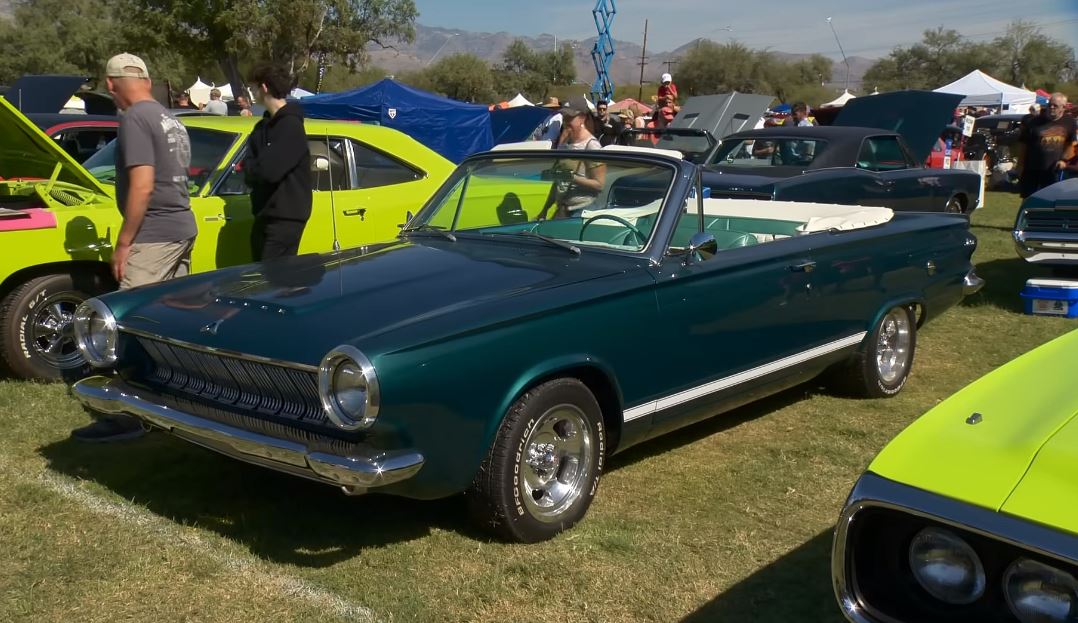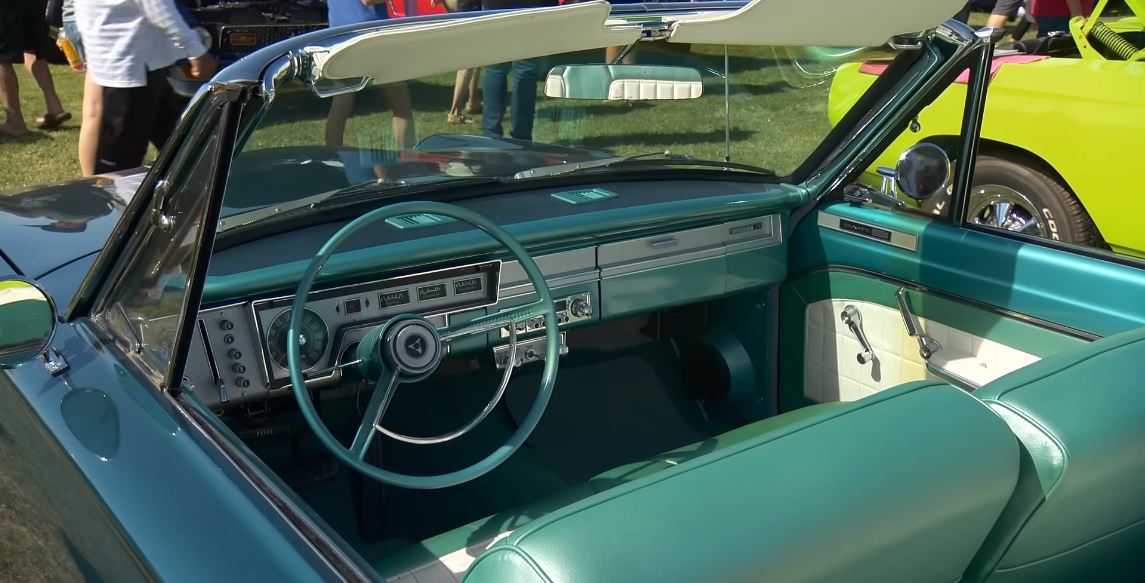Introduced in 1960 as a full-size car, the Dodge Dart was relegated to intermediate duty in 1962. But that didn’t last long because Dodge re-assigned the Dart to the compact car market in 1963. The nameplate spent more than a decade in this segment until it was discontinued in 1976. The Dart you see here is part of that legacy, but it’s a bit special.
The Dart wasn’t Dodge’s first compact automobile. The division joined the then-emerging segment with the Lancer in 1961. Even though Dodge made a last-minute decision to drop the Lancer name for 1963, the Dart used the same A-body platform Chrysler had introduced in 1960 with the Plymouth Valiant.
The Dart was a massive success compared to the outgoing Lancer, selling more than 100,000 units in its first year on the market. This Dark Turquoise example left the assembly line during that debut year and soldiered on for more than six decades.
While many early Darts are currently rotting away in junkyards, this convertible was rescued from such a sad fate. It now looks like it could win awards thanks to a Mopar enthusiast and his wife, who wanted an open-top classic. Some would say there are far better options than a 1963 Dart, and I couldn’t agree more. At the same time, this A-body was restored to a degree that eclipses many sought-after rigs from the era. It’s downright spectacular!
You do need to know, however, that the owner did not go for a factory-correct restoration. This convertible was born white. But the Dark Turquoise hue is correct for the 1963 model year and a far better choice. Likewise, the interior had a different color from the factory. The owner doesn’t know the layout since the car had been reupholstered before he got it, but the current pattern is true to what Dodge was offering at the time. And quite gorgeous in this two-tone, white-and-turquoise combo.
The engine bay also hides a nice surprise—this time around, it’s an aftermarket addition. A Dart 270 version, this drop-top left the assembly line with the base 170-cubic-inch (2.8-liter) slant-six. It wasn’t impressively potent, at 101 horsepower and 155 pound-feet (210 Nm) of torque, but it had enough oomph to move the 2,710-pound (1,229-kg) convertible at cruising speeds.
Still, the owner thought it needed more oomph, so he upgraded it. But instead of the V8 swap we usually see in vehicles like these, he kept the slant-six and added a unique Hyper-Pak update.
If you’re unfamiliar with the bundle, the Hyper-Pak was a parts package Chrysler offered from 1960 through 1962. Sold over the counter at Chrysler dealers, it included a long-ram intake manifold, a four-barrel carburetor, dual exhaust headers, a larger muffler, and a havier-duty clutch.
The package was created so that factory-backed teams could race Valiants. It also came with high-compression pistons in its full racing configuration. Although it wasn’t suitable for road cars due to poor fuel economy, rough idling, and a high power band, the Hyper-Pak enabled Valiants to dominate the competition in NASCAR compact car races in 1960.
This Dart’s upgrade is a bit different, though. Instead of a four-barrel carburetor, the owner went with a dual single-carb setup inspired by Offenhauser’s take on the Hyper-Pak. There’s no info on how powerful the slant-six is in this configuration, but it’s safe to say it packs nearly as much oomph as the factory 225-cubic-inch (3.7-liter) six-cylinder, rated at 145 horsepower in 1963.


